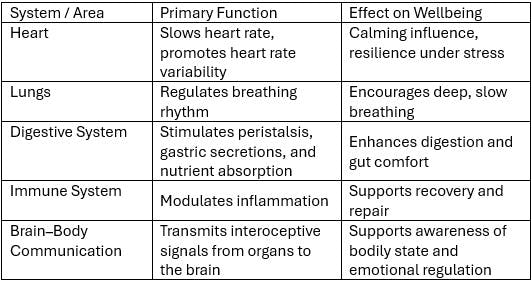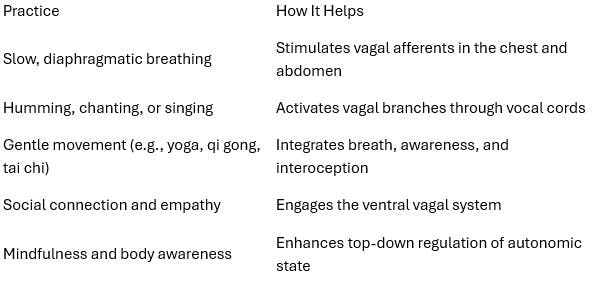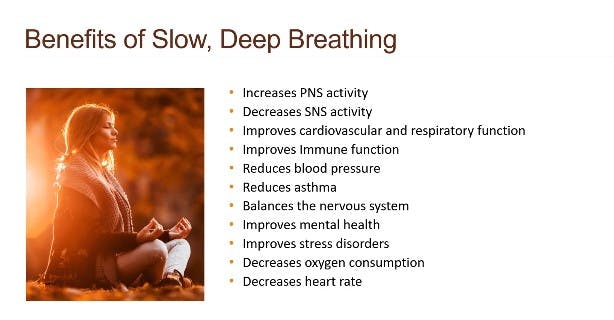CIRCLEWORK
The Vagus Nerve:
Pathways of Rest, Regulation, and Connection | 13 October 2025
Overview
The vagus nerve (cranial nerve X) is one of the body’s most vital communication pathways between the brain and the body. It is the main nerve of the parasympathetic nervous system, often called the “rest and digest” branch of the autonomic system.
The vagus connects the brainstem with organs throughout the neck, thorax, and abdomen — including the heart, lungs, and digestive tract. Through this connection, it helps regulate vital functions such as breathing, heart rate, digestion, and emotional balance.
Key Functions of the Vagus Nerve

Vagal Tone
Vagal tone refers to the efficiency and flexibility of vagal activity — how well the vagus nerve can shift the body between states of calm and arousal.
Higher vagal tone is linked to:
- Better stress recovery and emotional regulation
- Improved digestion and heart function
- A greater sense of safety and connection
Low vagal tone may correspond with chronic stress, shallow breathing, anxiety, or poor digestive function.
Ventral and Dorsal Vagal Pathways
The vagus nerve has two main functional branches, each associated with different states of being:

In healthy function, these two branches cooperate: the ventral vagal supports connection and regulation, while the dorsal vagal supports restoration and digestion.
The Gut–Brain Connection
The enteric nervous system (ENS) — often called the “second brain” — contains over 500 million neurons embedded within the walls of the gastrointestinal tract, stretching from the esophagus to the rectum.
These neurons control digestion, motility, and secretions independently, yet communicate continuously with the brain via the vagus nerve.
This two-way communication shapes both gut health and emotional state, explaining why feelings of anxiety, safety, or calm can so directly influence digestion and vice versa.
Healthy Dorsal Vagal Activation
While excessive dorsal vagal activity can lead to “shutdown” or immobilization, balanced activation is essential for:
- Bowel regularity and smooth peristaltic movement
- Deep rest and repair during relaxation or meditation
- Grounded presence in stillness practices (e.g., yin yoga, qi gong, slow breathing)
Supporting Vagal Health and Tone
Simple, consistent practices can enhance vagal tone and parasympathetic balance:


Summary
The vagus nerve is not just a single structure but a whole-body communication network that links brain, body, and emotion.
Understanding and cultivating vagal function supports:
- Emotional resilience
- Digestive harmony
- Restorative recovery
- Connection and vitality
Through breath, mindful movement, and compassionate awareness, we can learn to listen to and regulate the vagus, returning the body–mind to its natural rhythm of calm and connection.